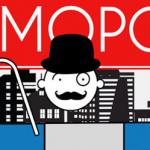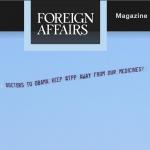In September, Allergen, the pharmaceutical company that produces Restasis, announced that it would extend its for the dry-eye medicine patent by selling the patent to the Saint Regis Mohawk, a Native American Tribe. The tribe, located in upstate New York, would receive $13.75 million and claim sovereign immunity so that Allergen could avoid a patent challenge brought by the United States Patent and Trademark Office.
Last week, PFAM submitted a formal comment to the Federal Register on the President Donald J. Trump Administration's plan to renegotiate NAFTA. PFAM's major concern is that reopening of NAFTA could lead to more extended monopolies on medicines. Check out the comment here.
“OK, but tell us what we would replace it with.”
The response in the online comments section following one of my articles on access to medicines may have been a bit curt, but the point was well-taken. Virtually no one who is not a pharmaceutical corporation CEO likes the current medicines system, with its ever-climbing prices causing deadly access barriers. But the question remains: are medicine patent monopolies and the resulting high patient costs a necessary evil?
Tobeka Daki died this week. And she shouldn’t have.
Tobeka lived in the Eastern Cape of South Africa, and was the mother of two sons. Her youngest son, Khanya, is 11 years old. In 2013, she was diagnosed with a strain of breast cancer known as HER2. There is a medicine called Trastuzumab, marketed under the name Herceptin, that is very effective at treating Tobeka’s form of breast cancer. The groundbreaking research that led to the discovery of Herceptin was funded by U.S. taxpayers. A year’s dose can be manufactured for about $176.
But Tobeka was never treated with Herceptin. The corporation that controls the medicine charges about $34,000 in South Africa for a year’s worth of doses.
Intellectual property protections for medicines are often overlooked in public discussions of U.S. trade agreements. But they shouldn’t be. Negotiations over such intellectual property can mean the difference between antiretroviral medicine that costs over $10,000 per year—the price originally set in the 1990s by monopoly patent holders—and the eventual grudging concessions that dropped the drug prices to less than a dollar a day. For millions of HIV-positive people in the developing world, that price gap is a matter of life and death. The same dynamic applies to patients in need of medicines to treat cancer, heart disease, and any number of other health conditions.



